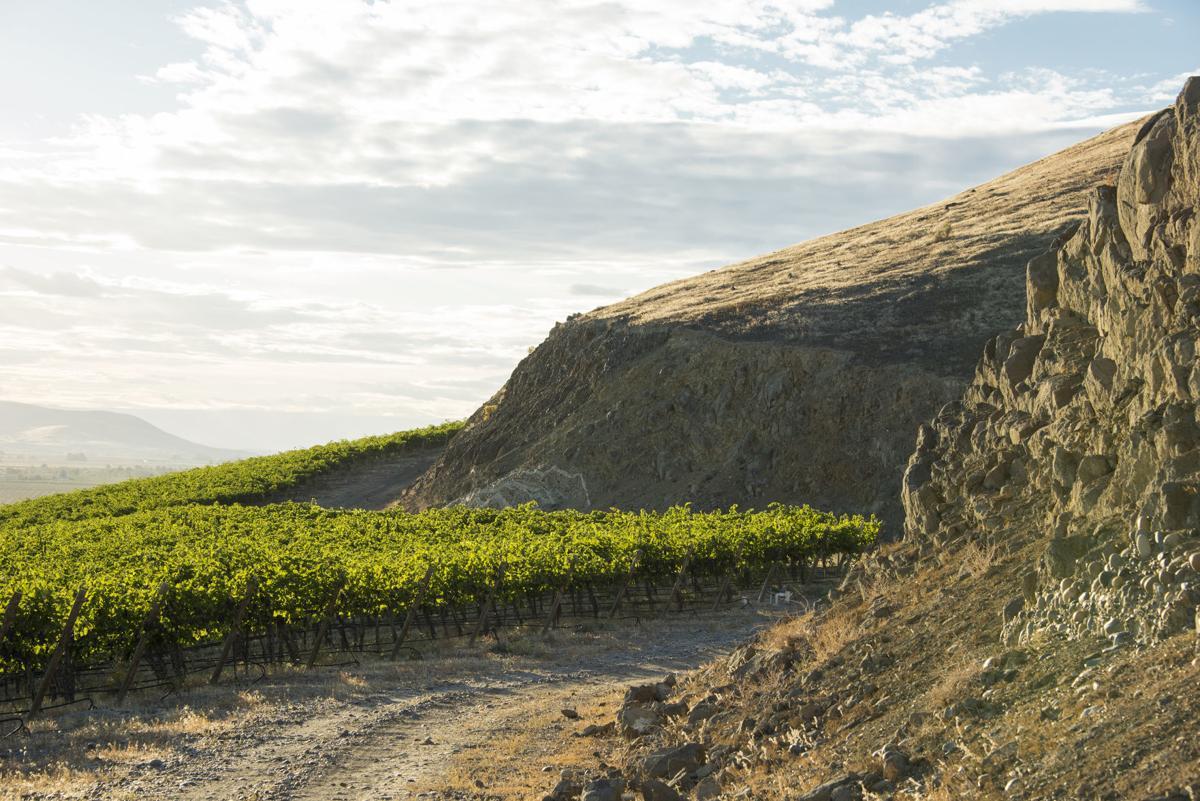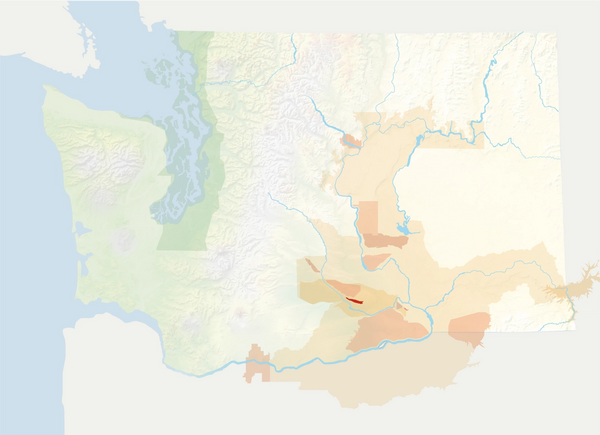
Snipes Mountain AVA
Snipes Mountain is home to some of the state's oldest vineyard, and boasts a long viticultural history of over 100 years. Its marked with large cobblestones and steep slopes.
Key statistics
2009
859 acres
7 inches

Characteristics
About the region
Snipes Mountain is one of Washington’s smallest appellations at 4,145 total acres (1,677 ha). Located between the towns of Sunnyside and Granger, Snipes Mountain is less a mountain than it is an anticline of the Yakima fold belt, a series of geologic folds that define a number of viticultural regions in Washington.
One of the defining features of Snipes Mountain is its soils, some of which come from an ancestral riverbed of the Columbia River. Many areas of the mountain are covered with fist- and melon-size cobblestones deposited by an ancient flow of the Columbia River. On top of this is loess—windblown deposits of sand, clay, and silt—over Missoula Flood sediment, with all but the top 90 feet of Snipes Mountain (1,290 feet above sea level) lying below this series of cataclysmic events.
Steep north and south-facing slopes allow cold air to flow downhill, helping to prevent frost damage that occasionally affects nearby regions. These slopes also provide varied aspect for grape growing. The area has an arid, continental climate. Irrigation is therefore required to grow vinifera grapes, as is the case in most of eastern Washington.
Though the area only received appellation status in 2009, Snipes Mountain boasts a long viticultural history. Vineyards were first planted in the area in 1914. Muscat of Alexandria vines from 1917, planted by Washington State wine pioneer William B. Bridgman, were until recently still producing grapes. Harrison Hill, which is part of the appellation, is home to some of the state’s oldest Cabernet Sauvignon vines dating to 1963.
Snipes Mountain, a sub-appellation of Yakima Valley, which itself is a sub-appellation of the larger Columbia Valley.

